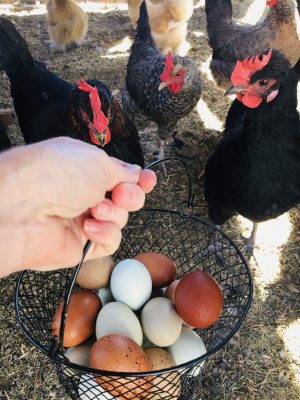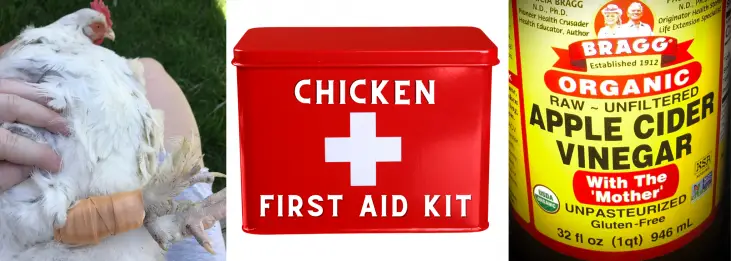
Whether you own a large flock or just a few backyard chickens, it’s a good idea to keep a first aid kit handy just in case an emergency occurs. Your chicken first aid kit should include items to disinfect cuts as well as items to treat various types of injuries and illnesses that can occur.
I have found the most common injuries and illnesses that occur in chickens that having a first aid kit is beneficial for are bumblefoot, sour crop, dehydration, broken legs, frost bite, parasites and egg impaction. Having the right “tools” when any of these occur can mean the difference of life and death with your chicken.
Chicken First Aid Kit Necessities
| CHICKEN FIRST AID KIT NECESSITIES | USE TO TREAT |
|---|---|
| Apple Cider Vinegar | SOUR CROP, CUTS |
| Probiotics | DEHYDRATION, ILLNESSES |
| Electrolytes | DEHYDRATION, ILLNESSES |
| Disposable Gloves | CUTS |
| Triple Antibiotic | CUTS |
| Vaseline | FROST BITE, EGG BINDING |
| Aspirin | INFLAMMATION |
| Nail Clippers | NAIL TRIMMING |
| Wing Clippers | CLIP WINGS |
| Vetrap Bandage | INJURIES, CUTS |
| Gauze Pads | INJURIES, CUTS |
| Cornstarch | BLEEDING |
| Vetericyn | CUTS |
| Eye Dropper | ILLNESSES |
| Epsom Salt | CUTS |
| Masking Tape | INJURIES |
| Dish Tub | SOAKING, STORE FIRST AID KIT IN |
| Liquid Calcium | EGG BINDING |
| Poultry Vet Rx | INJURIES |
| Green Goo | ILLNESSES |
| Diatomaceous Earth | PARASITES |
| Popsicle Sticks | INJURIES |
| Hydrogen Peroxide | INJURIES |
First Aid Supplies for Bumblefoot Treatment
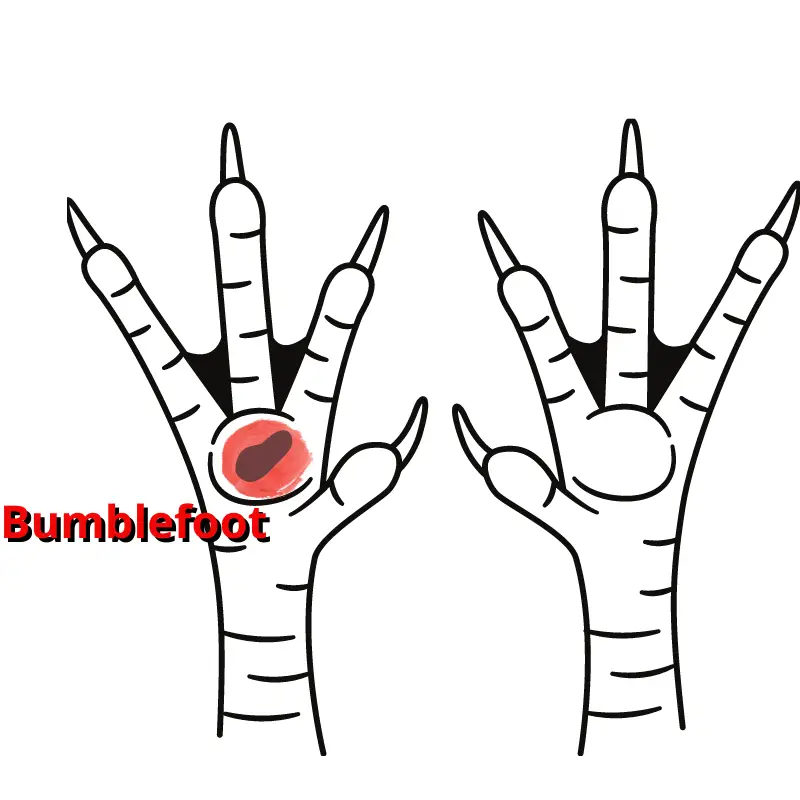
How Does a Chicken Get Bumblefoot?
Bumblefoot most commonly occurs in chickens when they get a cut on their foot and it is exposed to bacteria. It can also occur from repetitive hard landings, jumping down from high roosts. Chickens are constantly scratching the ground, foraging for food, predisposing them to developing infections.
A chickens’ environment is not the most sanitary environment. Cuts on feet are prone to becoming infected from dirt, poop and various other bacteria that a chicken comes into contact with. With early and proper treatment, bumblefoot can effectively be treated at home.
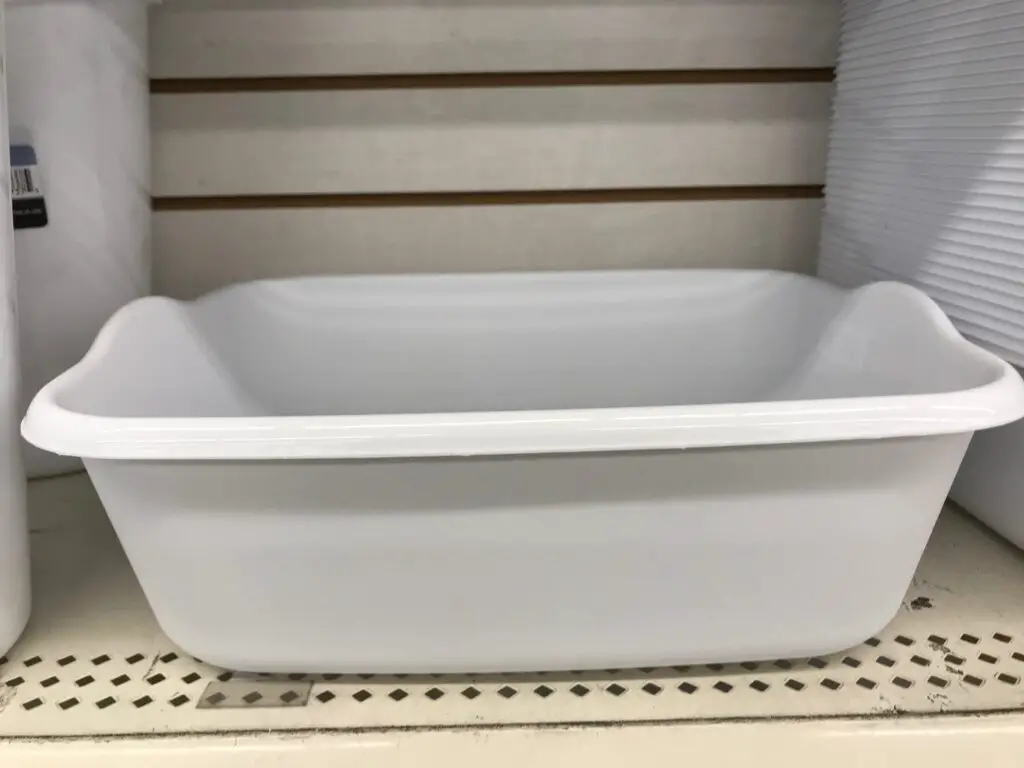
1.DISH TUB: I use a dish tub to soak a chickens cut or injured foot in.
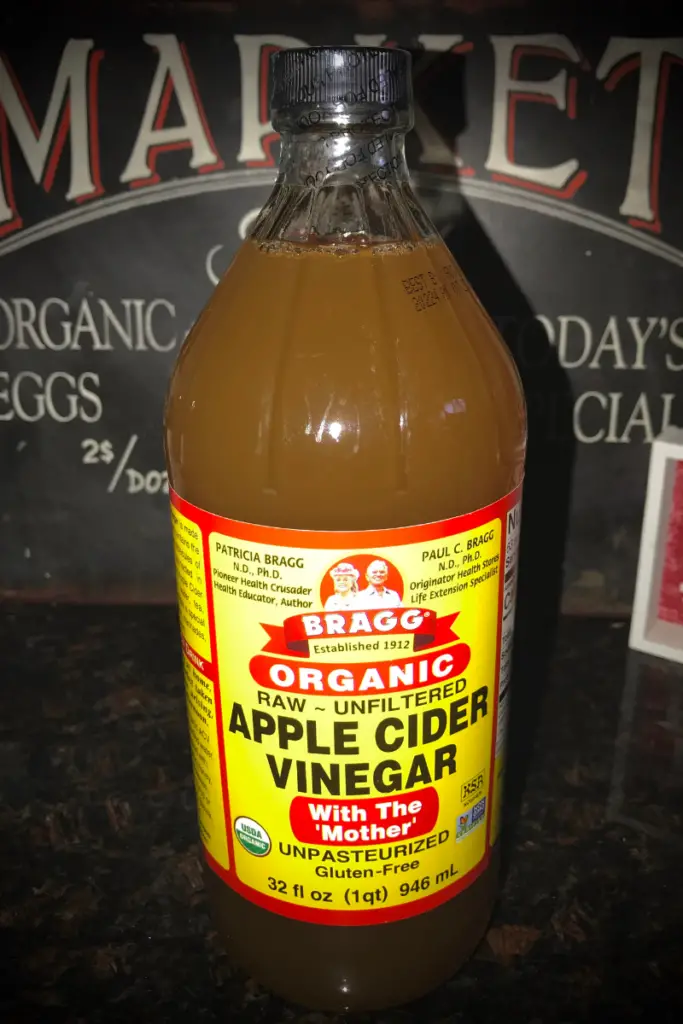
2. APPLE CIDER VINEGAR: I add 1 TBS of ACV to one gallon of warm water and pour it into the dish tub. I used it to soak my chickens feet in if I see any minor cuts or scrapes. Apple cider vinegar has anti bacteria properties that help to clean and draw out infection.
ACV has been proven to help fight Staphylococcus aureus and Escherichia coli, otherwise known as E. coli. ACV also helps to decrease inflammation and itching.
For other beneficial uses of ACV around your chicken coop, read my article 12 Uses of Apple Cider Vinegar Around Your Chicken Coop- How to Make Your Chickens Happy, Healthy and More Productive.
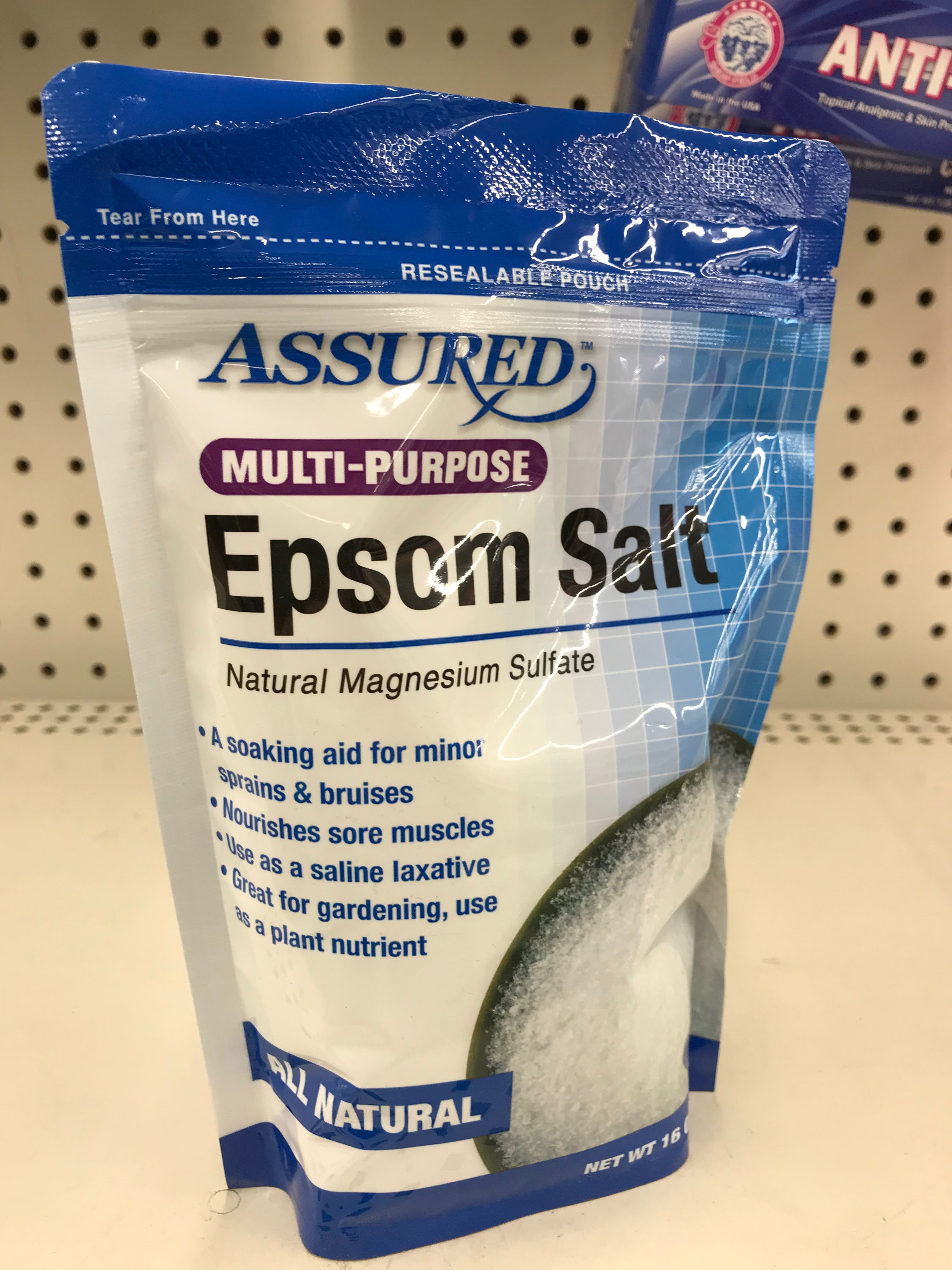
3. EPSOM SALT: An alternative to ACV soak is an epsom salt soak. This is what I usually start out with. Fill your tub with warm water and add the recommended amount of epsom salt, stir until dissolved. I get this at my local dollar store.
Make sure you add enough water to fully cover your chickens’ scab and let soak for a good 20-30 minutes. This will allow the scab to soften so you can more easily brush it off.
4. DISPOSABLE GLOVES: For sanitary purposes I always use disposable gloves when treating any cuts or scrapes on my chickens.
5. CORNSTARCH: I keep cornstarch on hand, just in case I need to stop bleeding. Sometimes bleeding will occur when you remove a soft scab. I also get this at my local dollar store.
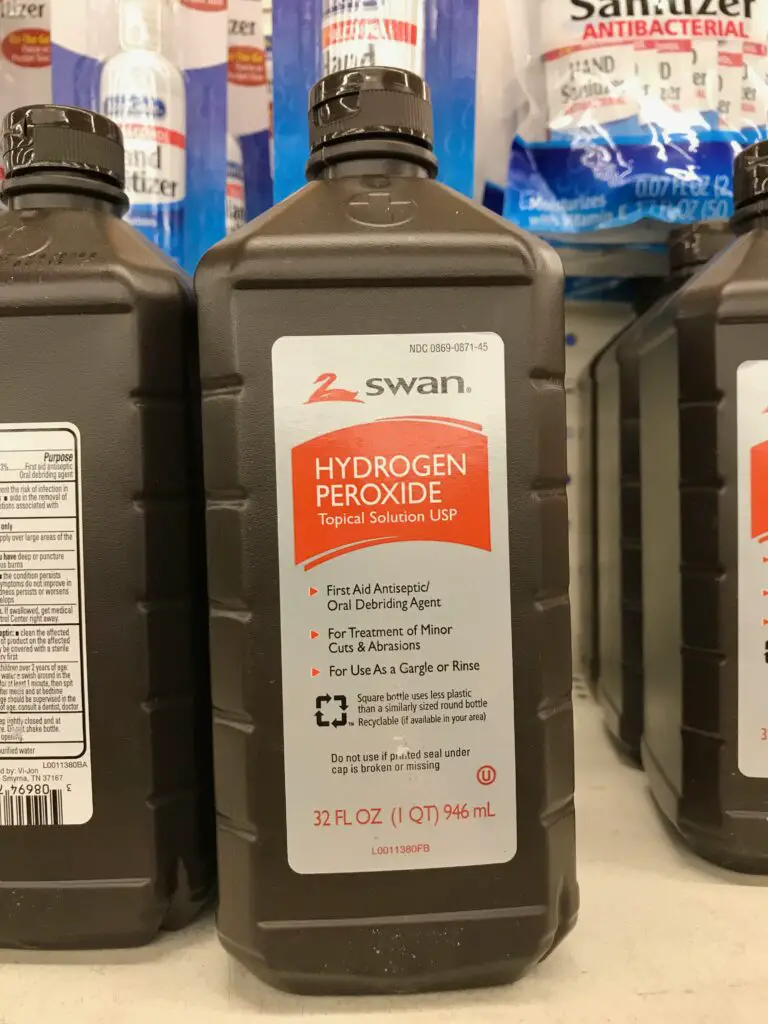
6. VETERICYN OR HYDROGEN PEROXIDE: Both can be used as antimicrobial sprays to help heal cuts and scrapes due to bumblefoot.
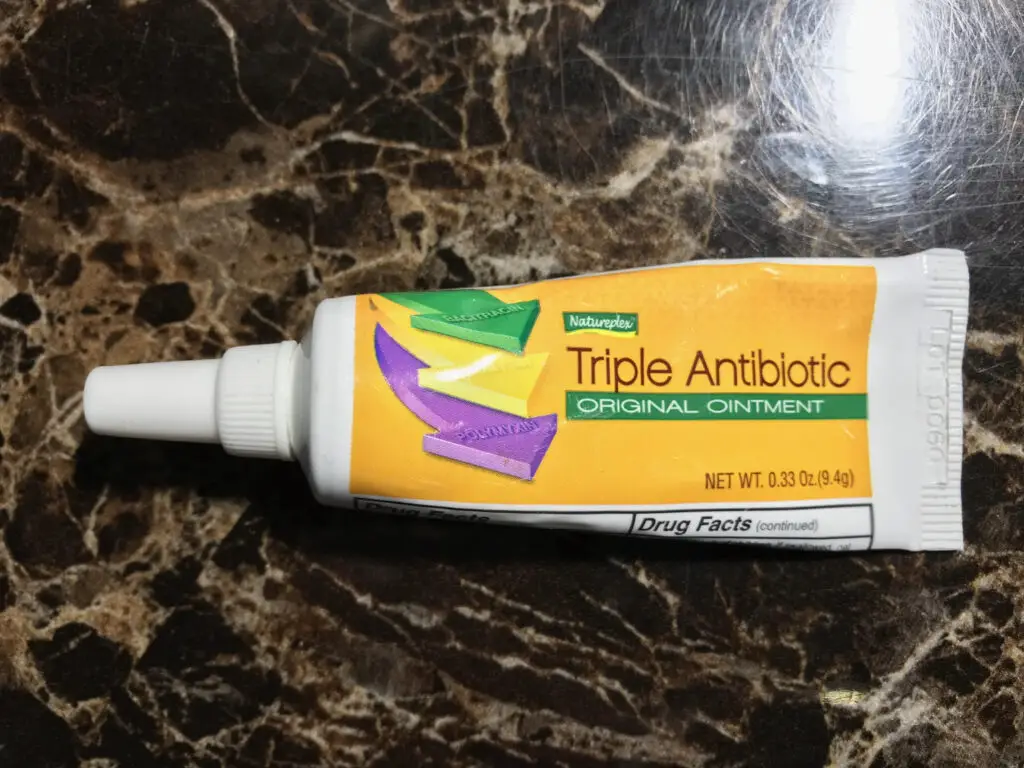
7. TRIPLE ANTIBIOTIC: After spraying the wound with Vetericyn or hydrogen peroxide I like to apply Triple Antibiotic. You can get this at your local dollar store.
8. GAUZE: Cover the cut with gauze after cleaning it.
9. VETRAP BANDAGE: This is to wrap over the gauze to hold it in place. It is a bandage that will stick to itself, but is easy to remove from skin and feathers. I bought the equivalent to this at my local dollar store.
For severe bumblefoot you may have to repeat soaking up to 3 times a day.
Chicken First Aid Kit Supplies for Sour Crop
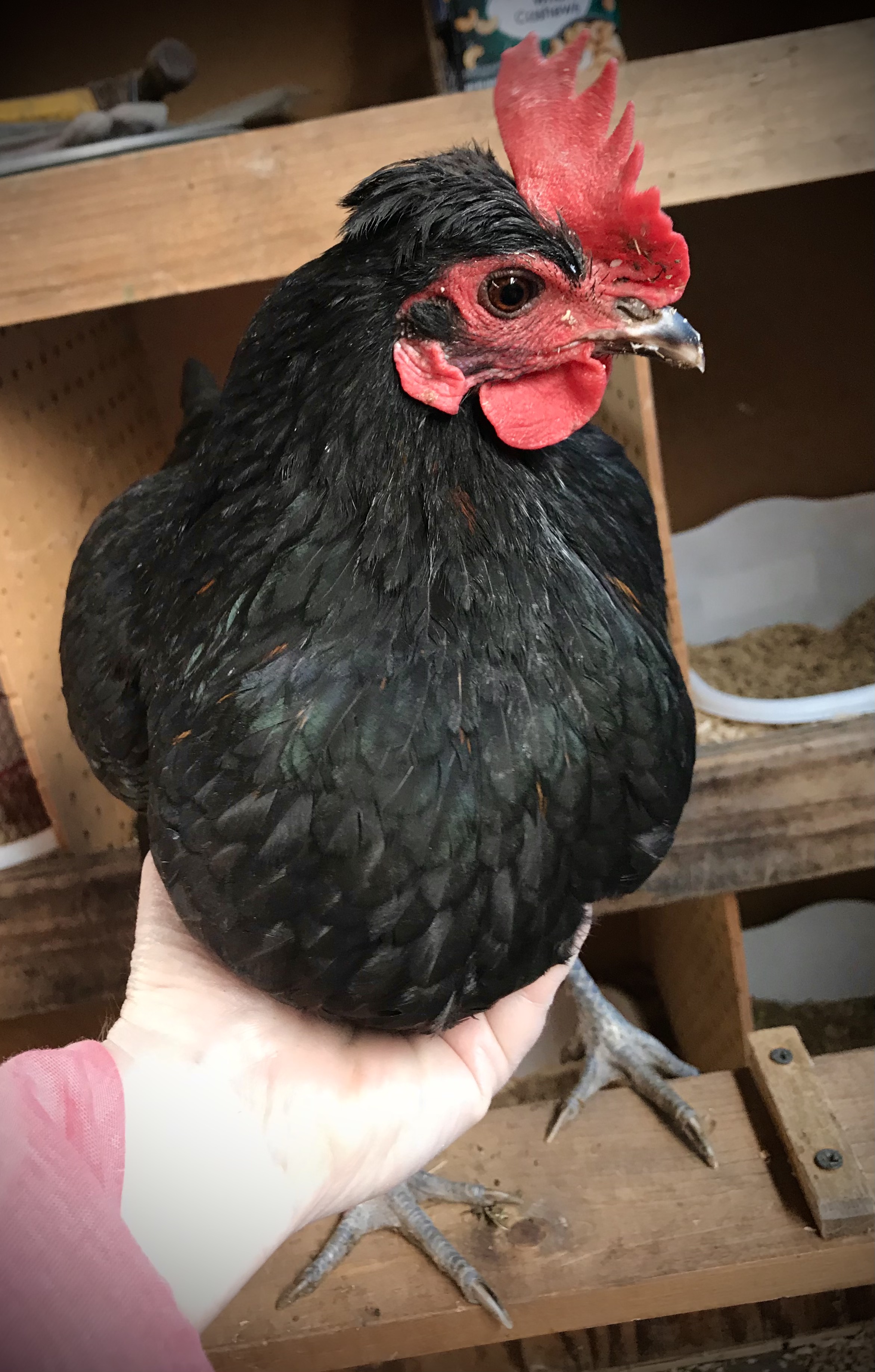
Sour crop is a growth of a fungus, candida albicans, or yeast infection in the chicken crop. It can develop because it is emptying too slowly, impacted, worms, yeast infection or previous antibiotic use. A sour crop will look like a large lump at the base of the neck, feel soft and squishy, smell sour and if you listen carefully you can hear a gurgling sound.
Backyard Chickens Mama
For more information on how to cure chicken sour crop, read my article Chicken Sour Crop – How to Best Cure.
APPLE CIDER VINEGAR: I have found that the best treatment for sour crop is preventing it from occurring in the first place. Once a month add 1 TBS of ACV in 1 gallon of water along.
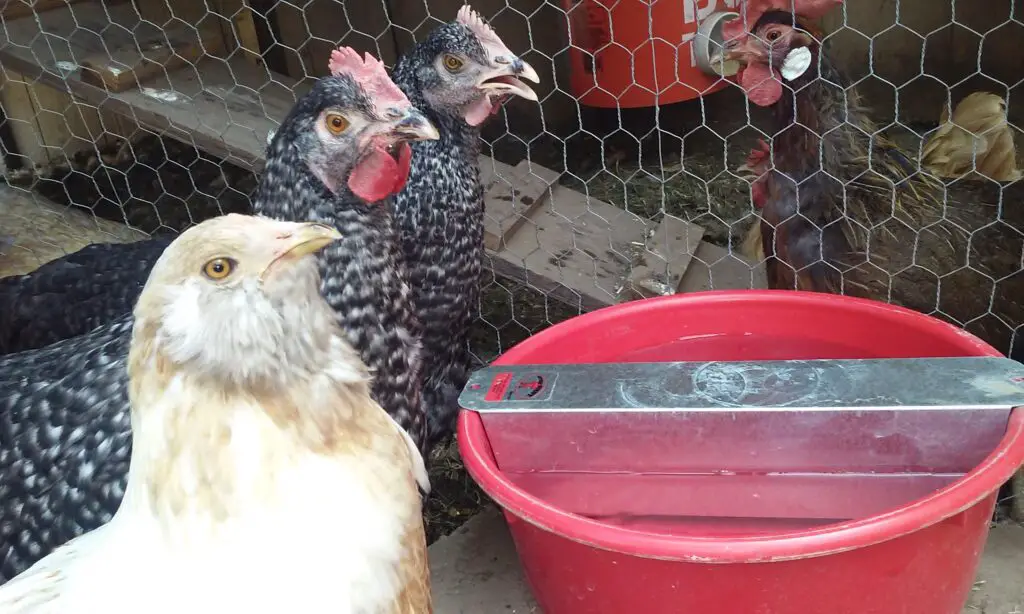
PROBIOTICS: Give your chickens probiotics at least once a month. This can be done by offering yogurt with live active cultures inside of it. Or you can get the powder form that you add to its food or water.
For more information on chicken sour crop, read my article Chicken Sour Crop – How to Best Cure.
Chicken First Aid Kit Supplies for Dehydration
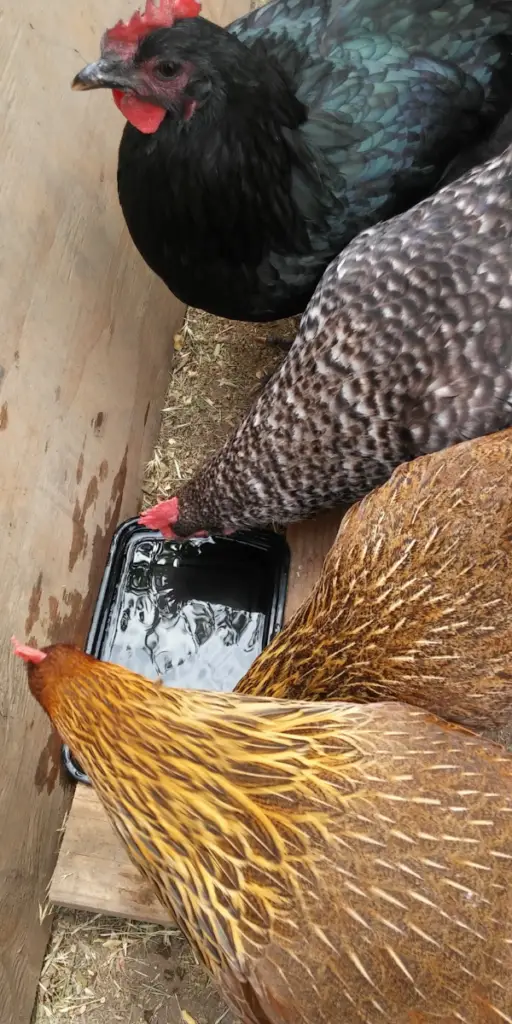
WATER: Chickens can easily become dehydrated if they are not supplied with a sufficient amount of water. An adult chicken will drink about 1 liter of water per day and up to twice this amount during extreme heat. Always make sure you offer enough fresh water and replenish it on really hot days.
ELECTROLYTES: Electrolytes are made up of minerals that will help to balance a chickens fluid levels. I add this to my chickens water during times of extreme heat.
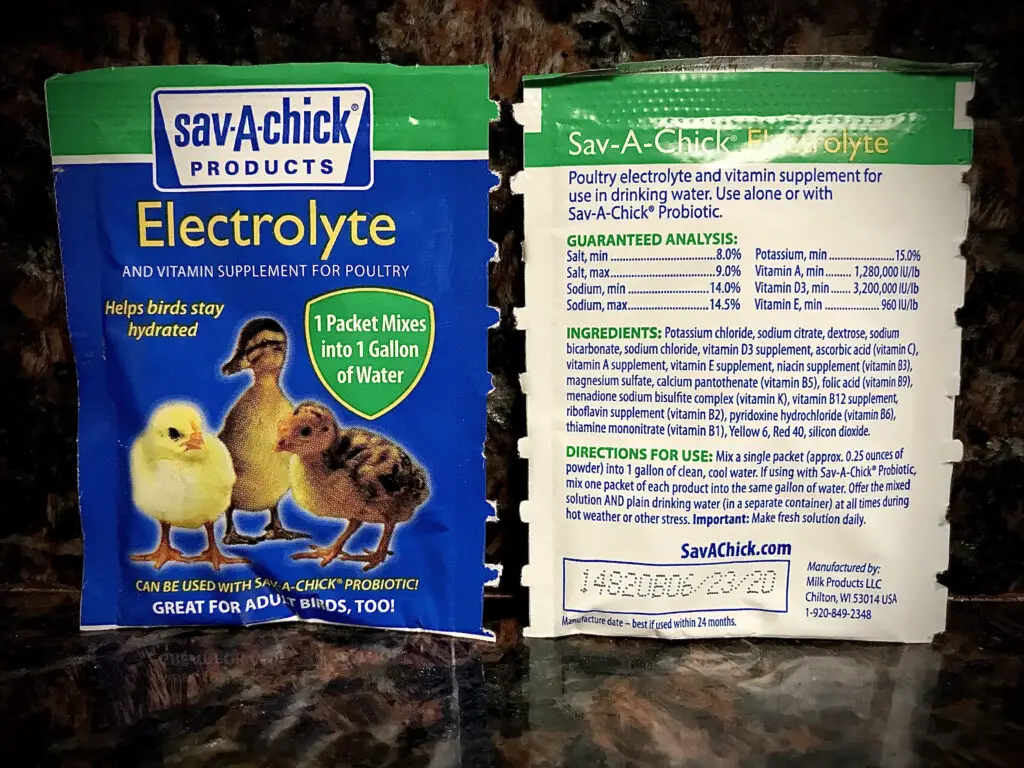
PROBIOTICS: I also add probiotics about once a month to my chickens water during the summer months. This helps to build up a chickens beneficial bacteria in their digestive system and greatly will help decrease their stress during times of extreme heat.
For more information on how you can keep your chickens cool during extreme heat, read my article 17 Tips – How to Keep Chickens Cool in Extreme Heat.
Chicken First Aid Kit Supplies for Broken Legs
Chickens can get a broken leg for various reasons like jumping from too high of a perch, getting stuck in fencing or even getting stepped on. If the break is not too bad, you can treat it on your own. I have and have had great success.
To see how to fix a broken chicken leg at home with $4, read my article How to Fix a Broken Chicken Leg With 4 Dollar Store Items.
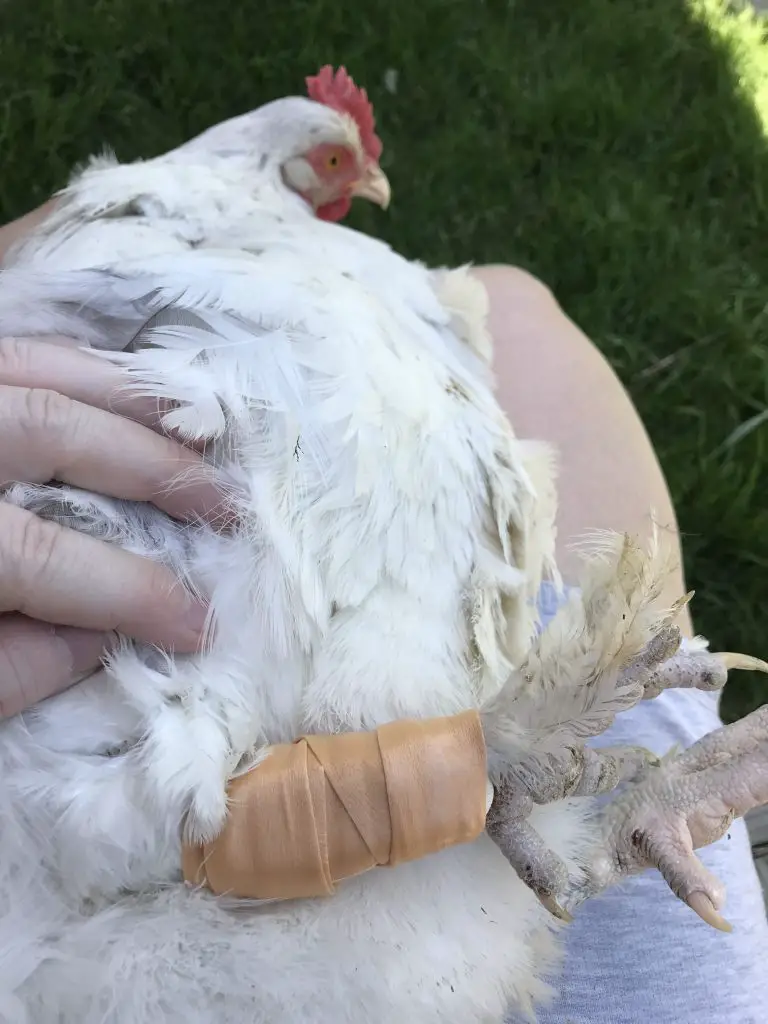
POPSICLE STICKS: I use popsicle sticks to splint the break. I place one on either side of the broken bone.
VETRAP TAPE: Use Vetrap tape to secure the splint. Don’t wrap this too tightly. It’s important that you don’t cut of blood circulation!
MASKING TAPE: I put masking tape on top of the Vetrap tape. This way, if it gets soiled, I can easily change the tape out without removing the Vetrap.
Chicken First Aid Kit Supplies for Frost Bite in Chickens
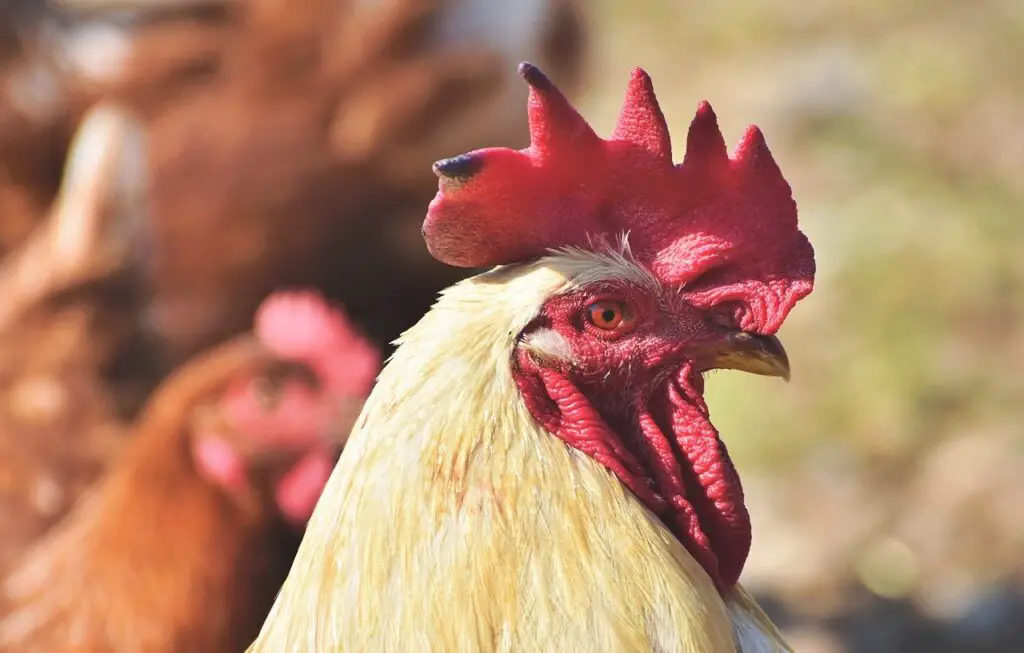
VASELINE: Chickens are prone to getting frost bite during very cold weather, especially on their comb and wattles. During extreme cold weather, I will wait until my hens are roosting for the night and apply a little bit of vaseline on their combs and wattles.
First Aid Supplies for Parasites in Chickens
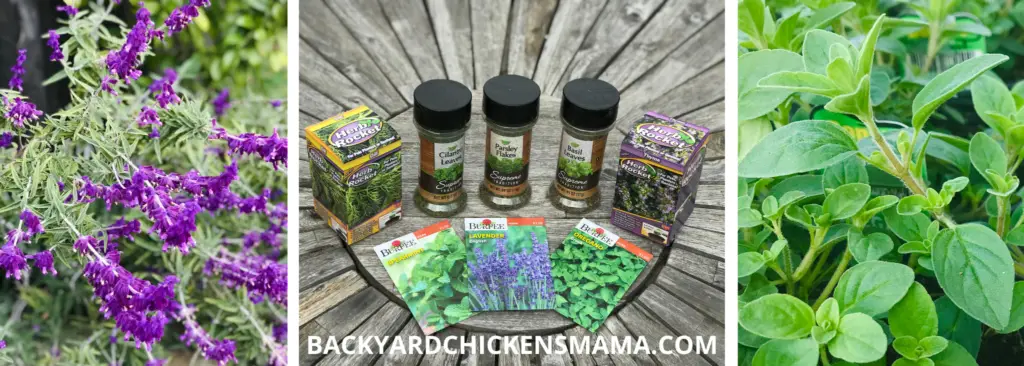
NATURAL HERBS: Lemon balm, basil, rosemary and marigold are all natural insect repellants. I grow these natural herbs and will occasionally place some either dried or fresh inside the nesting boxes or around the chicken coop.
For more information on how you can benefit by using natural herbs around your chickens, read my article 5 Important Ways To Use Herbs Around Your Chickens.
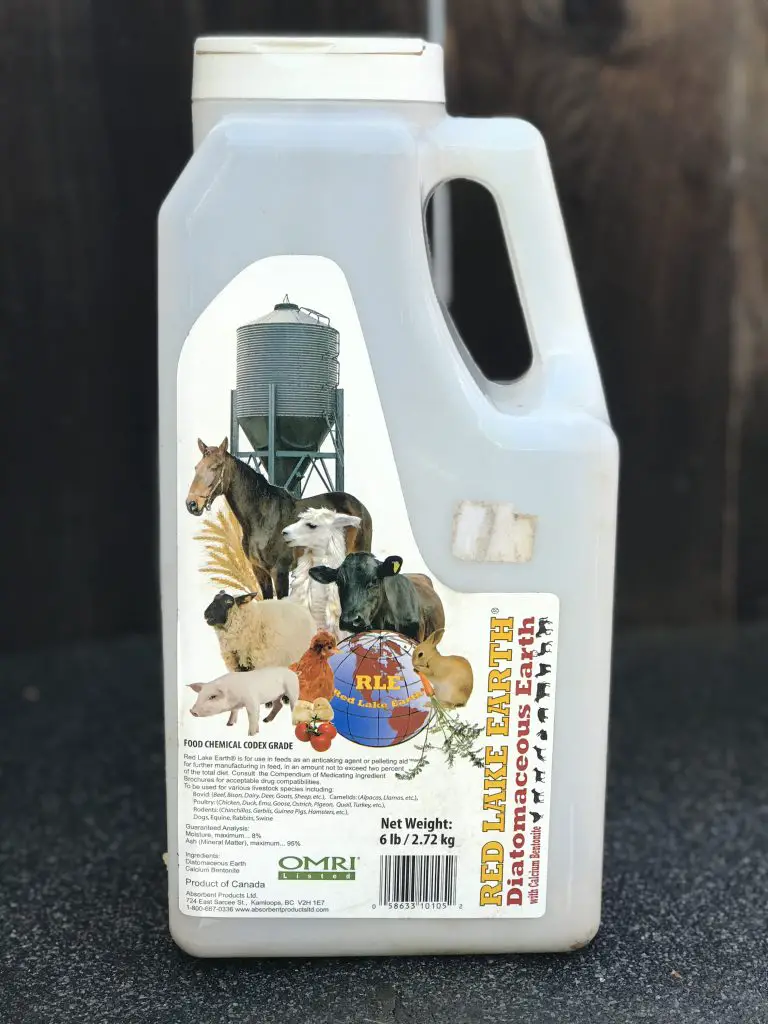
DIATOMACEOUS EARTH: This comes in a powder form and it is made from very tiny fossilized algae based plants. It is non toxic and safe to both people and chickens. It will kill fleas, ticks, mites and many other nasty parasites. I sprinkle a little of this in the nesting boxes.
Nesting boxes are one of the most common areas that hens can pick up parasites. By far the most important thing to do to help deter parasites is to routinely clean your nesting boxes. I place fresh bedding in my nesting boxes weekly, more often if they are ever soiled or dirty.
After cleaning my nesting boxes, I will sprinkle some diatomaceous earth and or natural herbs to help deter the parasites. The natural herbs also help it to smell nice around the chicken coop!
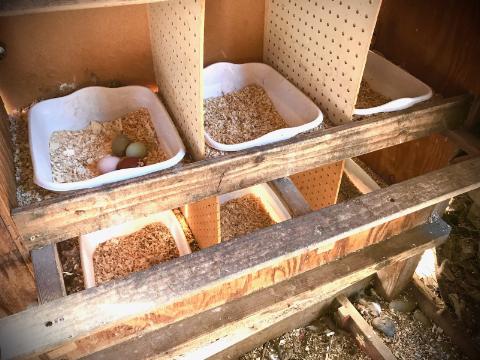
Chicken First Aid Kit Supplies for Egg Impaction
DISH TUB: I fill a small dish tub with warm water mixed with epsom salt and let my egg bound hen soak in it for 20-30 minutes. This can help to relax the muscles and sometimes a hen will pass the egg naturally.
EPSOM SALT: I add epsom salt to the warm tub of water and let my egg bound hen soak in it for a good 20 minutes. Sometimes, gently rubbing her abdomen while in the tub of warm water will help her to naturally lay the egg.
DISPOSABLE GLOVES: It’s a good idea to wear disposable gloves when trying to help your hen pass an impacted egg. The water can get pretty dirty from your hens dirty feet and any poop that may come off of her feathers during this procedure.
VASELINE: I always try to let my hen pass the egg naturally by massaging her abdomen while she is in the warm epsom salt bath, but sometimes this isn’t enough and I need to help more. Place vaseline on your latex glove and gently rub on her vent to lubricate.
F.A.Q.’S
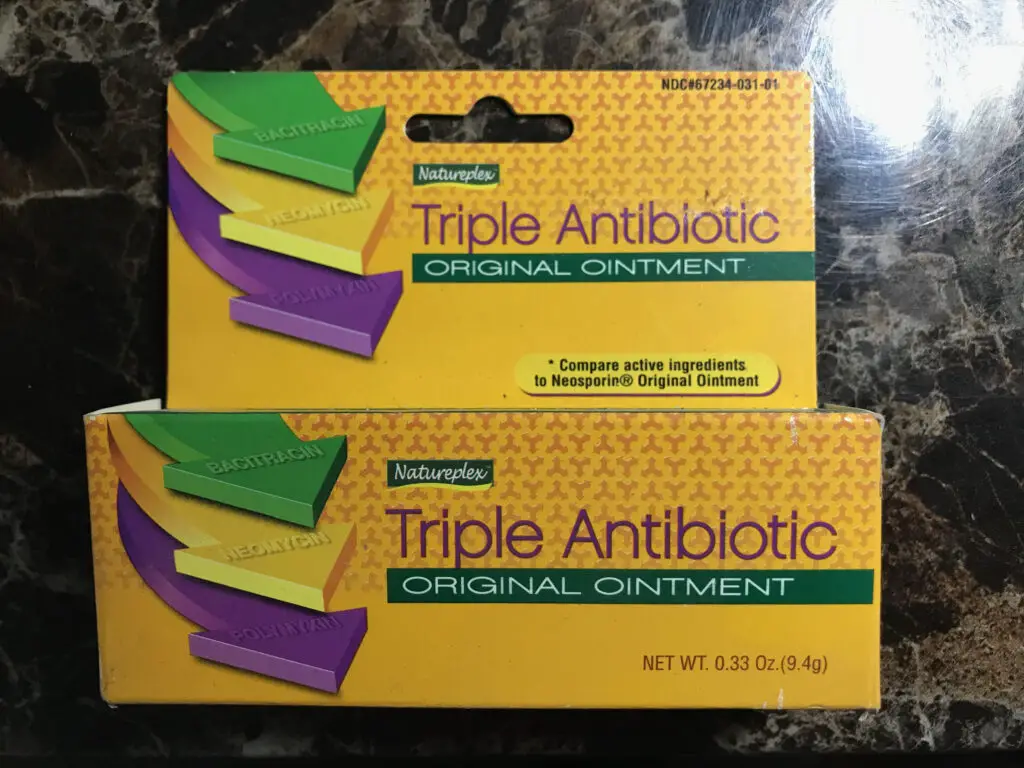
Can I put antibiotic ointment on my chicken?
Avoid antibiotics with added pain relievers in it. Typically, medications with a pain reliever in it will have the suffix “caine,” at the end. For example Benzocaine, Lidocaine. Neosporin has been proven safe by the FDA for poultry. Always check with your veterinarian if you are in doubt.
What can I put on a wound on a chicken?
It is safe to soak wounds in a warm epsom salt or ACV bath, use hydrogen peroxide or Vetericyn and also to apply a triple antibiotic, without any added pain relievers, such as Neosporin to it. Always check with your veterinarian if you are in doubt.
Is Neosporin OK for chickens?
According to the FDA, Neosporin is OK to use on chickens. Neosporin and Bacitracin are triple antibiotics that you can safely put on a chickens minor cuts and scrapes. Just do not put anything on your chicken that has an added pain reliever in it. Pain relievers often have the suffix “caine.”
What do you give chickens for inflammation?
For inflammation in the feet or a chicken’s underside, you can soak it in a few inches of warm epsom salt bath water for about 20 minutes. Or, crush up 325 mg of aspirin, add it to 1 gallon of water and offer her this water 2-3 times each day for up to 3 days.
Conclusion: What Do I Need in My Chicken First Aid Kit?
It’s a good idea to get prepared for any chicken emergencies that may occur. Especially bumblefoot, sour crop, dehydration, broken legs, frost bite, parasites and egg impaction. Having the right “tools” when any of these occur can mean the difference of life and death with your chicken.
What do you have packed in your chicken first aid kit?
*I am not a veterinarian. The opinions and treatments expressed in this article are mine and are what worked for me. Always consult a veterinarian or a professional for any injuries or illnesses you may be experiencing with your pet.

